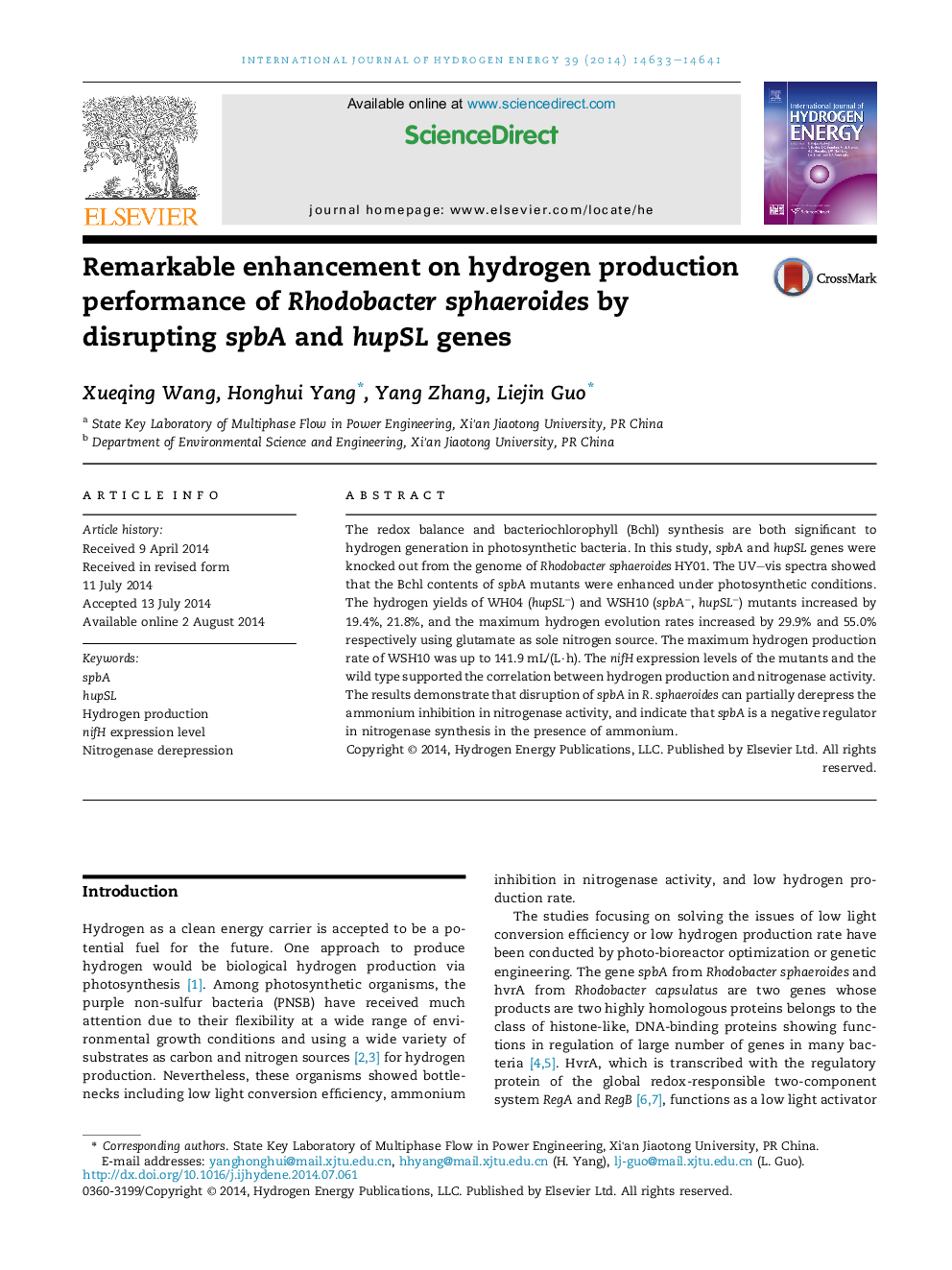| Article ID | Journal | Published Year | Pages | File Type |
|---|---|---|---|---|
| 7718027 | International Journal of Hydrogen Energy | 2014 | 9 Pages |
Abstract
The redox balance and bacteriochlorophyll (Bchl) synthesis are both significant to hydrogen generation in photosynthetic bacteria. In this study, spbA and hupSL genes were knocked out from the genome of Rhodobacter sphaeroides HY01. The UV-vis spectra showed that the Bchl contents of spbA mutants were enhanced under photosynthetic conditions. The hydrogen yields of WH04 (hupSLâ) and WSH10 (spbAâ, hupSLâ) mutants increased by 19.4%, 21.8%, and the maximum hydrogen evolution rates increased by 29.9% and 55.0% respectively using glutamate as sole nitrogen source. The maximum hydrogen production rate of WSH10 was up to 141.9 mL/(L·h). The nifH expression levels of the mutants and the wild type supported the correlation between hydrogen production and nitrogenase activity. The results demonstrate that disruption of spbA in R. sphaeroides can partially derepress the ammonium inhibition in nitrogenase activity, and indicate that spbA is a negative regulator in nitrogenase synthesis in the presence of ammonium.
Keywords
Related Topics
Physical Sciences and Engineering
Chemistry
Electrochemistry
Authors
Xueqing Wang, Honghui Yang, Yang Zhang, Liejin Guo,
